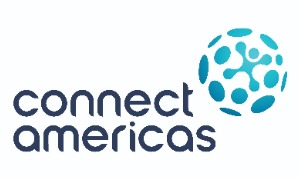Joining the value chains of large companies or governments is an opportunity for business growth. But it does not happen from one day to the next and a fundamental aspect is that your company is prepared, that is, that it can comply with the documentation, certification and process requirements that your customers will request.
Consider that a company can be a supplier to large buyers at different points in its supply chain, since the supply chain encompasses all the activities involved in bringing a product or service to the end user, from the receipt of raw materials for production to the distribution of the product.
So the first step is to identify where in the supply chain your company could sell the products or services it offers.
Once you have identified the above, let's talk about the requirements to be met in order to join a supply chain. Although not all large companies and government institutions ask for the same requirements, there are some that are transversal to all sectors.
Depending on the area of the company to which they relate, these minimum requirements are:
- Regarding your company: document of incorporation of the company, tax compliance and registration and granting of licenses and permits by the authority.
- Regarding your company's representative: power of attorney that accredits him/her as legal representative, official identification.
- Regarding your finances: account statements, annual turnover level.
- Regarding your banking information: institution, type of account, account holder and currency, bank statement cover page, bank account certification.
- Regarding your products or services: catalog of products or services, demonstrate your operational capacity as a supplier company.
- Regarding your people: number of employees, compliance with permits and records related to labor legislation and social security.
- Regarding your customers: list of customers for the last two years.
- Regarding your quality: compliance with quality specifications, certifications.
- Regarding your insurance situation: insurance (types and insurance companies).
Also consider your company's administrative documentation, which will allow you to demonstrate that you have a strong organizational structure capable of managing important projects with large clients.
It is worth remembering that an indicator that helps to generate a good reputation, as well as access to more opportunities, is to comply with your fiscal obligations and be up to date with your tax situation.
Keep in mind that some requirements depend on the laws of each country and the type of product or service being marketed. If you do not have some of these requirements, take this information as a guide to implement the ones you need.
Here you can download a tool to keep in mind and verify if you comply with the general requirements that companies ask for (Downloadable Lesson 7).
Certifications that give certainty
Having a certification is important both for your company and for your potential buyers, as it allows you to demonstrate that you comply with regulations and quality standards in your processes. It is also an opportunity to access and position yourself in different national and international markets. Certification is also a strategy to add value to products or services and opens the door to new business opportunities, commercial contacts and connections.
The purpose of certifications is to demonstrate to the market, buyers and regulatory bodies that you comply with the quality and environmental care requirements defined in the regulations.
But not all certifications are the same. They can be for products (for sectors such as food, textiles or hygiene) or services (for sectors such as commerce, tourism or maintenance).
Find out what kind of certifications you can obtain with this tool (Downloadable Lesson 8).
Attention to logistics management
For companies that want to sell their products or services to large buyers, logistics management is fundamental. This implies having a good supply, an optimal production and an efficient distribution in cost and quality.
Remember that the key to a company's logistics management is customer satisfaction. That is why when you seek to optimize customer service in your logistics chain, you achieve better planning, improve your company's internal and outbound logistics management and increase your competitiveness.
Do you want to improve your company's logistics management? Download an action plan guide to achieve it (Downloadable Lesson 9).



Follow Us